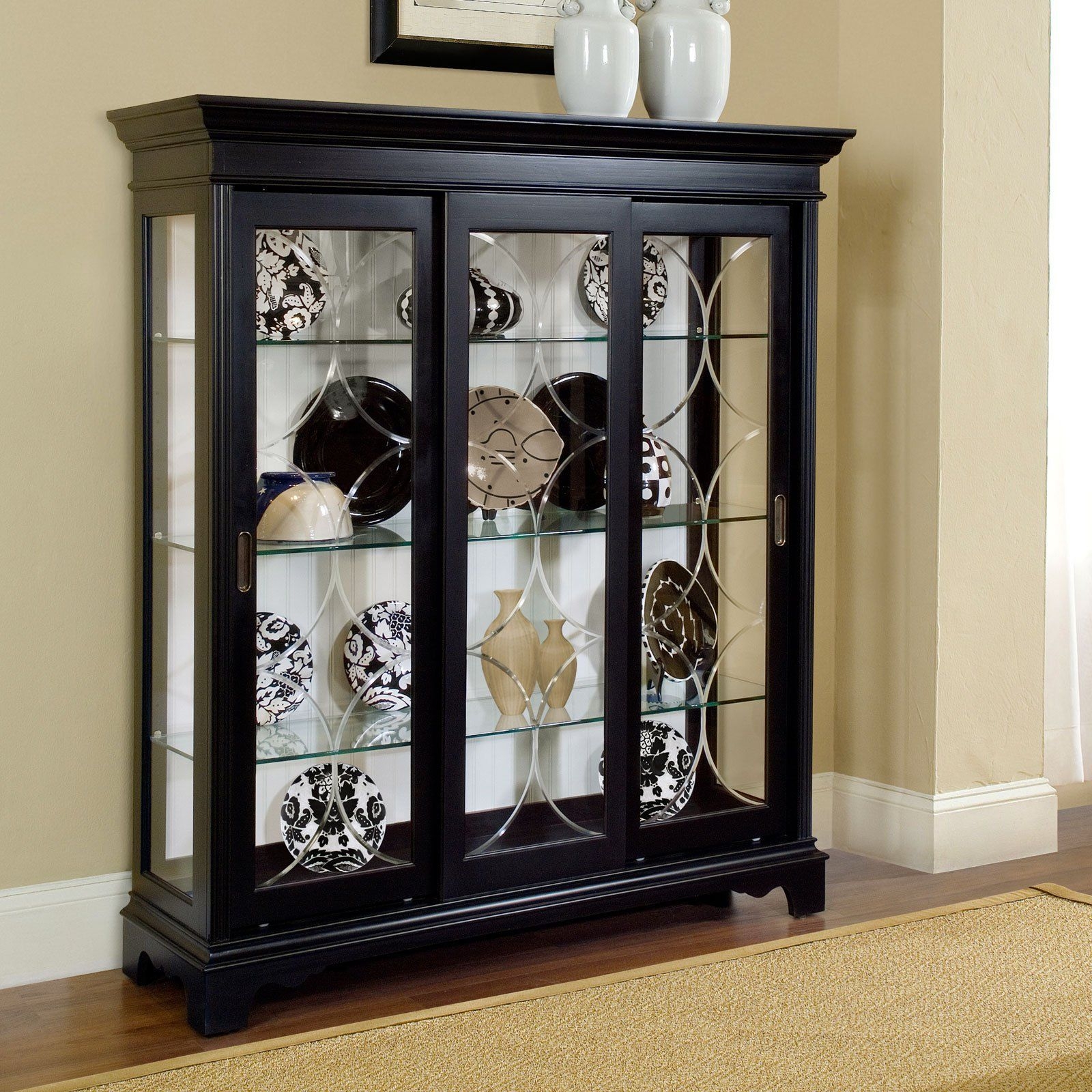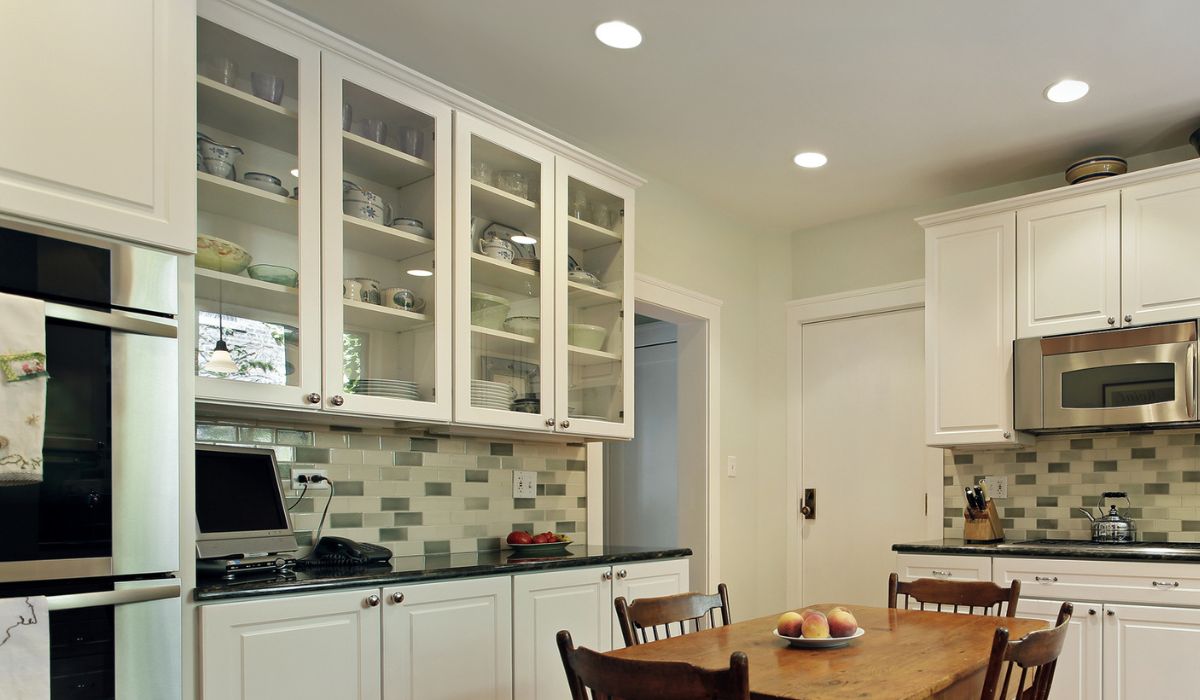Displaying Treasures: The Art of Curating Glass Cabinet Contents

A glass cabinet offers a unique opportunity to showcase cherished items and create a visually captivating display. The key to crafting a compelling display lies in thoughtfully curating the contents, reflecting your personal style and interests.
Choosing Items that Reflect Personal Style and Interests
The items you choose to display should resonate with your passions and tell a story about who you are. Whether it’s a collection of vintage glassware, antique books, or shells gathered from your travels, each piece should evoke a sense of nostalgia, curiosity, or joy.
Creating Visual Interest and Depth
Beyond simply displaying items, consider how they interact with each other to create visual interest and depth. A collection of vintage glassware can be arranged by color, shape, or era, creating a visually appealing and informative display. Antique books can be stacked or layered to add height and texture, while a collection of shells can be displayed in a bowl or on a tray, adding a touch of nature to the cabinet.
Creating a Cohesive Theme
A cohesive theme can unify the display and create a sense of harmony. Consider themes such as travel, botanical, vintage, or a specific color palette. For example, a travel theme might feature souvenirs from different countries, maps, and vintage luggage. A botanical theme might incorporate pressed flowers, botanical prints, and ceramic planters. A vintage theme could showcase antique cameras, vintage clothing, and old-fashioned toys.
Arranging Items in a Visually Appealing Manner, What to put in glass cabinets
The arrangement of items within the glass cabinet is crucial to creating a visually pleasing display. Here are some tips:
- Varying Heights and Textures: Use items of different heights to create visual interest and prevent the display from feeling flat. Incorporate items with varying textures, such as glass, wood, metal, or fabric, to add depth and complexity.
- Balancing Symmetry and Asymmetry: While a symmetrical arrangement can create a sense of order and balance, too much symmetry can feel rigid. Introducing elements of asymmetry, such as placing a taller item on one side of the cabinet and a shorter item on the other, can add visual interest and prevent the display from feeling too predictable.
- Using Negative Space: Don’t be afraid to leave some empty space in the cabinet. This allows the eye to rest and prevents the display from feeling cluttered.
- Lighting: Good lighting is essential for showcasing the items in the cabinet. Consider using LED lights to illuminate the display and highlight the details of each piece.
Display Styles and their Effects
| Display Style | Effect |
|---|---|
| Symmetrical | Creates a sense of order, balance, and formality. |
| Asymmetrical | Adds visual interest, dynamism, and a sense of casualness. |
| Minimalist | Creates a clean, uncluttered, and sophisticated look. |
| Eclectic | Combines items from different styles and periods, creating a unique and personal display. |
Illuminating Your Collection

The right lighting can transform a glass cabinet from a simple display case into a captivating showcase for your treasured possessions. Proper illumination not only enhances visibility but also adds depth, texture, and a touch of drama to your collection.
Types of Lighting
Choosing the right type of lighting depends on the size and contents of your cabinet, the desired effect, and your budget. Here are some popular options:
- LED Strips: These versatile lights are available in various colors and brightness levels, making them ideal for creating ambient lighting or highlighting specific items. They can be easily installed along the edges of the cabinet or even hidden behind shelves. LED strips are energy-efficient and long-lasting, making them a cost-effective choice.
- Spotlights: Spotlights offer focused illumination, ideal for showcasing individual items or creating dramatic effects. They can be mounted on the ceiling or walls, and some even come with adjustable beams for precise targeting. Spotlights are available in various wattages and styles to complement your cabinet’s aesthetic.
- Ambient Lighting: Ambient lighting provides overall illumination to the cabinet, creating a soft and welcoming atmosphere. This can be achieved using recessed lighting, track lighting, or even decorative lamps placed near the cabinet. Ambient lighting helps to balance the spotlighting effect and creates a more cohesive display.
Creating Different Moods and Effects
Lighting can be used to create a range of moods and effects within your glass cabinet.
- Warm White: This color temperature creates a cozy and inviting atmosphere, perfect for showcasing antique collections or personal memorabilia.
- Cool White: Cool white lighting offers a crisp and modern feel, ideal for contemporary art pieces or minimalist displays.
- Colored Lighting: Colored LED strips can be used to create dramatic accents and highlight specific items. For example, blue lighting can enhance the brilliance of glass objects, while red lighting can create a sense of warmth and intimacy.
Emphasizing Specific Items
- Spotlighting: Use spotlights to draw attention to specific items, such as sculptures, artwork, or prized possessions. Aim the light directly at the object to create a dramatic effect.
- Backlighting: Placing lights behind the items creates a halo effect, making them appear to float. This technique is particularly effective for showcasing translucent objects, such as glassware or ceramics.
- Underlighting: Placing lights underneath the shelves creates a sense of depth and dimension. This technique is ideal for showcasing collections that include books, figurines, or other items with intricate details.
Designing a Lighting Plan
To create a cohesive lighting plan for your glass cabinet, consider the following factors:
- Cabinet Size: The size of the cabinet will determine the number and type of lights needed. Smaller cabinets may only require a few LED strips or spotlights, while larger cabinets may benefit from a combination of ambient lighting and spotlights.
- Placement: Consider the placement of the cabinet and the direction of natural light. If the cabinet is placed near a window, you may need to use more powerful lights to overcome the natural light.
- Desired Effect: Determine the mood or effect you want to create with your lighting. Do you want a warm and inviting atmosphere or a crisp and modern feel?
Practical Considerations: What To Put In Glass Cabinets

Preserving the beauty and value of your glass cabinet collection requires mindful care and attention. This section delves into practical tips and techniques for maintaining and protecting your treasures, ensuring they remain vibrant and safe for years to come.
Cleaning and Maintenance
Regular cleaning is crucial for preserving the brilliance of your glass cabinet and the integrity of its contents. A gentle approach is key, avoiding harsh chemicals that can damage delicate surfaces.
- Use a microfiber cloth or a soft, lint-free cloth for dusting. Avoid abrasive materials that can scratch glass or delicate surfaces.
- For stubborn stains, a mixture of mild dish soap and warm water can be effective. Apply the solution to a cloth and gently wipe the surfaces. Rinse thoroughly with clean water and dry with a soft cloth.
- Avoid using harsh chemicals like ammonia or bleach, as they can damage the glass and the finish of the cabinet.
- Consider using a commercial glass cleaner specifically designed for delicate surfaces. Apply the cleaner to a soft cloth and wipe the glass surfaces, ensuring the cleaner is safe for your cabinet’s materials.
- When cleaning the inside of the cabinet, ensure all items are removed and dusted individually. This allows for thorough cleaning and prevents dust from settling back on the items.
Preventing Dust Accumulation
Dust is a constant threat to the appearance and longevity of your glass cabinet collection. Effective dust prevention strategies are essential for maintaining a pristine display.
- Place a dust cover over the cabinet when not in use. This barrier prevents dust from settling on the glass and the contents.
- Consider using a dehumidifier in the room where the cabinet is located. This helps to reduce moisture in the air, which can attract dust and create condensation.
- Regularly dust the cabinet and its contents with a soft, lint-free cloth. This proactive approach minimizes dust buildup and keeps the display looking its best.
- Place items in protective enclosures like archival boxes or display cases. These barriers prevent direct contact with dust and protect delicate items from scratches and abrasions.
Protecting Delicate Items
Handling delicate items with care is crucial for their preservation. Appropriate display materials and techniques ensure that your treasures remain safe and secure.
- Use acid-free paper or archival boxes to store and display delicate items. These materials prevent acid migration, which can damage paper, textiles, and other materials over time.
- Avoid using metal display materials that can react with certain items, causing discoloration or damage. Opt for acid-free materials like archival cardboard or museum board.
- Handle delicate items with clean, dry hands. Avoid touching surfaces that might leave fingerprints or oils, which can attract dust and damage delicate materials.
- Consider using protective gloves when handling particularly fragile items. This minimizes the risk of accidental damage or fingerprints.
Display Materials
Choosing the right display materials is crucial for showcasing your collection while ensuring its protection. Each material has its own advantages and disadvantages, so consider the specific needs of your collection.
| Material | Pros | Cons |
|---|---|---|
| Glass | Clear and transparent, allows for maximum visibility, easy to clean | Fragile, can be heavy, may require additional support for delicate items |
| Acrylic | Lightweight, shatter-resistant, clear and transparent | Can scratch easily, may yellow over time, can be more expensive than glass |
| Wood | Natural and warm, can be stained or painted to match your decor, durable | Can be susceptible to moisture damage, may require regular maintenance |
| Metal | Durable, can be used for both display and storage, modern and sleek | Can be heavy, may rust or corrode, can be cold to the touch |
Preventative Measures Checklist
A comprehensive checklist helps ensure the long-term preservation of your glass cabinet collection. Regularly review and implement these preventative measures to minimize damage and maintain the beauty of your treasures.
- Dust the cabinet and its contents regularly.
- Use acid-free paper or archival boxes for delicate items.
- Avoid using harsh chemicals for cleaning.
- Handle delicate items with care and wear gloves when necessary.
- Store the cabinet in a cool, dry environment.
- Avoid placing the cabinet in direct sunlight or near heat sources.
- Monitor the humidity levels in the room and use a dehumidifier if necessary.
- Regularly inspect the cabinet for signs of damage or wear and tear.
What to put in glass cabinets – Glass cabinets are like mini-museums for your most prized possessions! Show off your beautiful china, vintage glassware, or even your favorite cookbooks. And don’t forget about the sleek, modern look of a lift up glass cabinet door – it adds a touch of elegance to any kitchen or dining room.
No matter what you choose to display, a glass cabinet is a fantastic way to add personality and style to your home.
Glass cabinets are a fantastic way to showcase your favorite items, whether it’s a collection of vintage china, a display of family heirlooms, or even a curated selection of your most beloved books. If you’re looking for a stylish and practical option, consider a 2 door glass cabinet – they offer ample space for displaying your treasures while adding a touch of elegance to any room.
With their sleek design and clear glass panels, these cabinets allow you to create a visually appealing display that’s sure to impress your guests.
